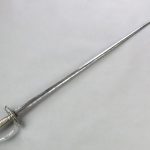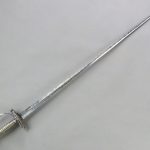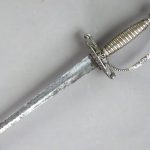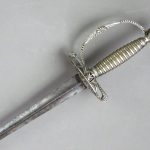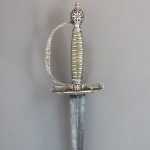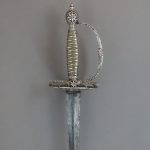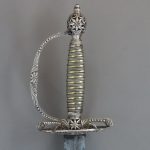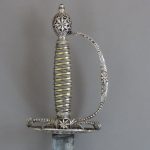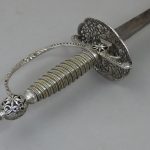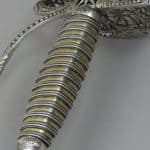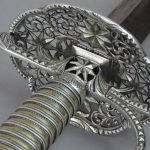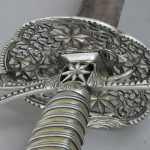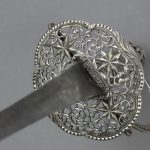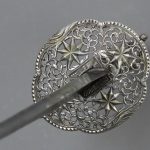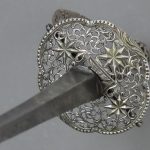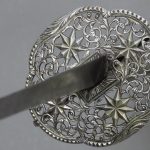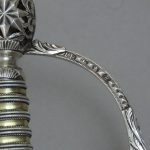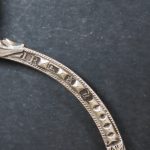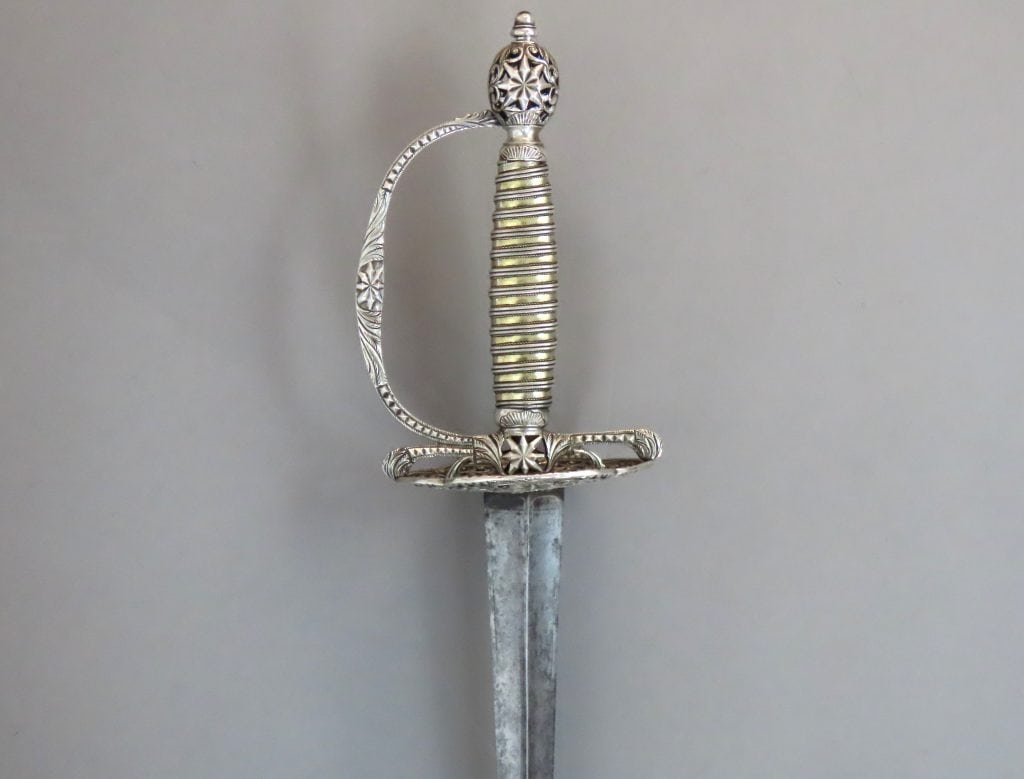
A Fine English Silver Hilted Small Sword by John Radborn of the City of London Hallmarked for 1764 / 1765
To enquire about this itemplease click here
Price: £2,450
Ref: 42502512
Item Description
A very fine English silver hilted small sword by John Radborn of London with hallmarks for 1764 / 1765. The hilt is mounted with a dish guard which is exquisitely pierced and chased with rococo foliate scrolls and multi pointed florets. This design is the common theme present on the other major silver components of the sword which attests to the originality and homogeneity of the parts. The sword is well-balanced in hand and the silver hilt is, unusually, in excellent condition having experienced almost no wear, and maintained its shape without damage or repair. The sword is mounted with a tapering hollow ground triangular section blade.
The hilt is an example of the high standards of design and execution required of the 18th century London silversmith as well as an example of one of the most effective weapons of the 17th and 18th centuries. Silver hilted small swords were fashionable attire for gentlemen. Mostly worn for effect, someone wearing such a sword was also announcing to the world that he was able to use it. Despite the stylish and often delicate appearance of these swords they were formidable dueling weapons.
The sword hilt is in excellent crisp condition without losses or repairs and has maintained its original pleasing profile. The shallow dish guard has a strengthened rim shaped as four crescents on the outside which supports the exquisitely pierced and chased delicate and intricate foliate designs within. The perimeter is raised with a continuous chain of diamond shaped links further strengthened in the middle front and back where the rim is thickened and engraved with foliate sprays. The ricasso, pas d’ ane rings, knuckle bow and pommel are pierced and chased in the same decorative style as the dish guard. The stamped maker’s mark of “I R” is present on one side of the knucklebow near the pommel in raised relief inside a depressed rectangle, accompanied by the crowned leopard’s head assay mark, the royal lion passant and date marks.
The baluster shaped grip is covered with spirally wrapped bevelled silver strip, separated by wrapped silver twisted wire, flanked by thinner ropes on either side. Silver cap terminals are present top and bottom of the grip engraved with floral designs.
The tapering, hollow ground, stiff, triangular section blade retains evidence of its original engraved foliate panels near the hilt. It is in good condition with a shallow mottled grey patina and blackened spots of age staining and light pitting.
John Radborn worked in the New Street precinct of the City of London for all of his professional life. He is first recorded when he was indentured to the cutler Nathaniel Young in 1737. On the death of Young in 1742 he was turned over to John Smith for the remainder of his term and was sworn free of the Cutlers’ Company by servitude in 1745 when he probably entered his first mark at Goldsmiths Hall which is now lost. His first surviving mark was entered in 1762. On moving address in 1769 Radborn entered another mark which was very similar to the last to confirm the move. He was admitted as a pensioner of the Cutlers’ Company in 1776 and died in 1780.
John Radborn was one of the most gifted silver hilt makers and sword cutlers of his time. For further information see “London Silver-Hilted Swords”, their makers, suppliers and allied traders, with directory, by Leslie Southwick, 2001, Royal Armouries, and particularly page 202 for the biography of John Radborn and examples of his work in plates 46, 66, 72-3, 74 and colour plate 3.
The blade is 31.25 inches (just over 79.5 cm) long and the overall length of the sword is 38 inches (96.5 cm).
